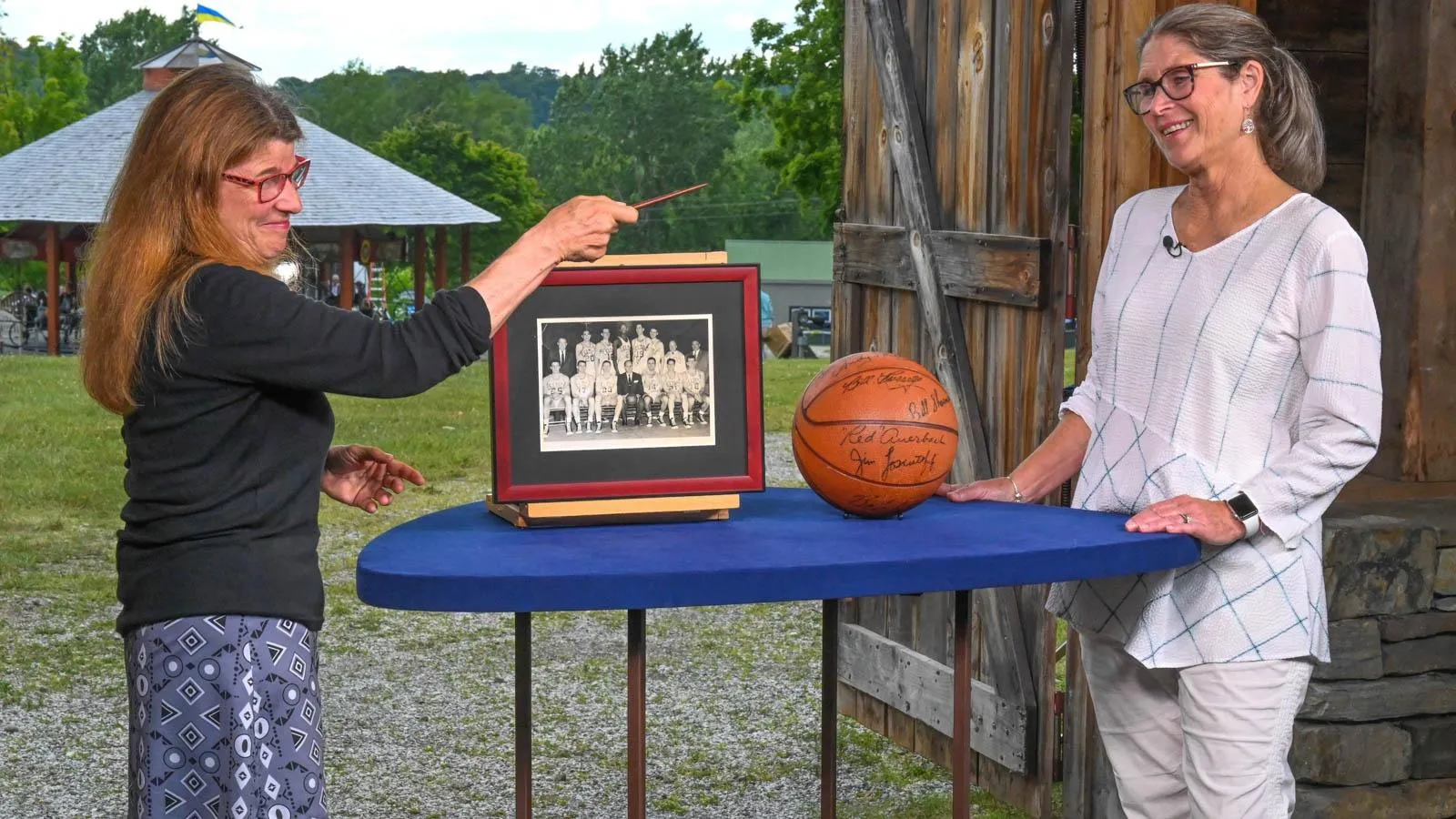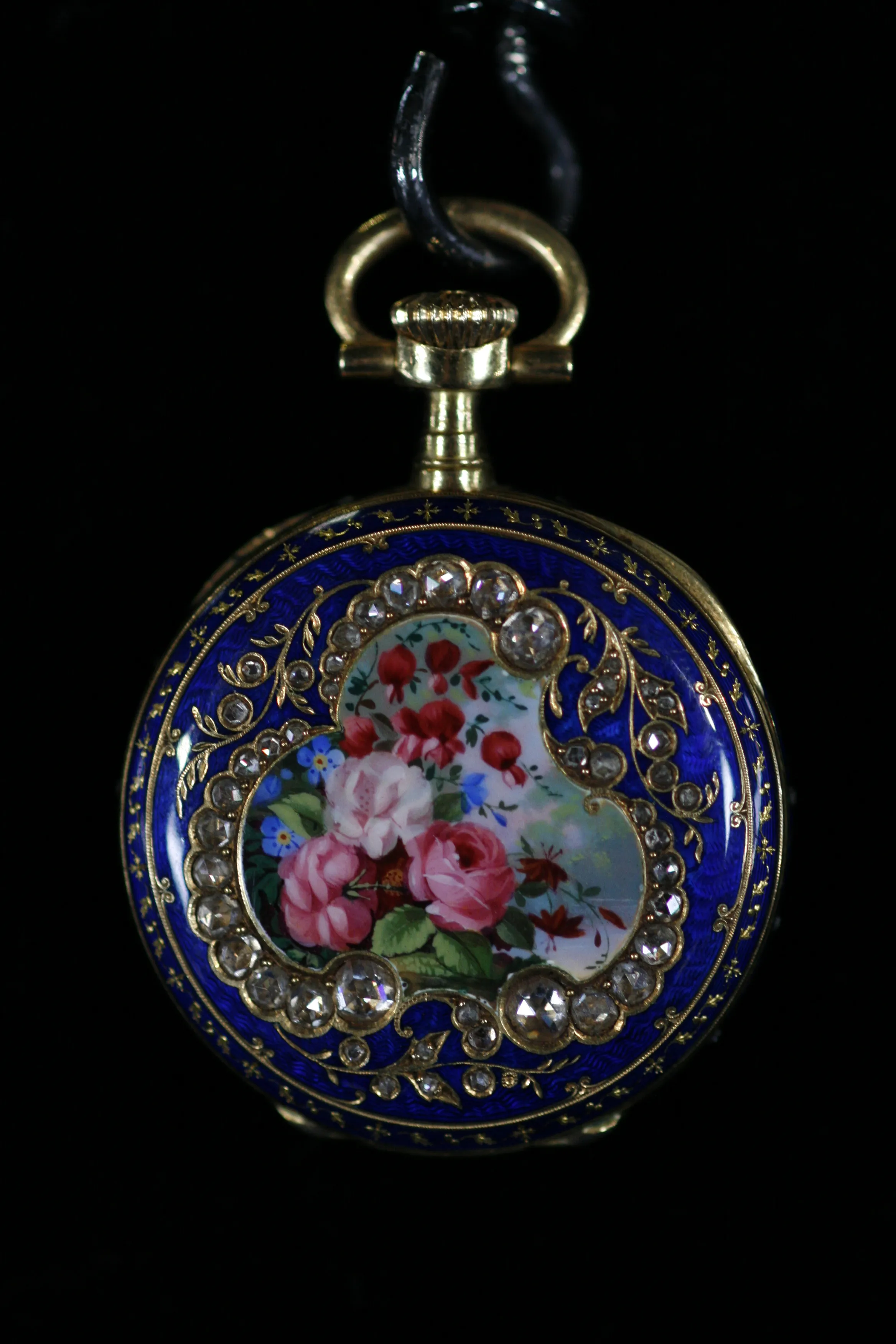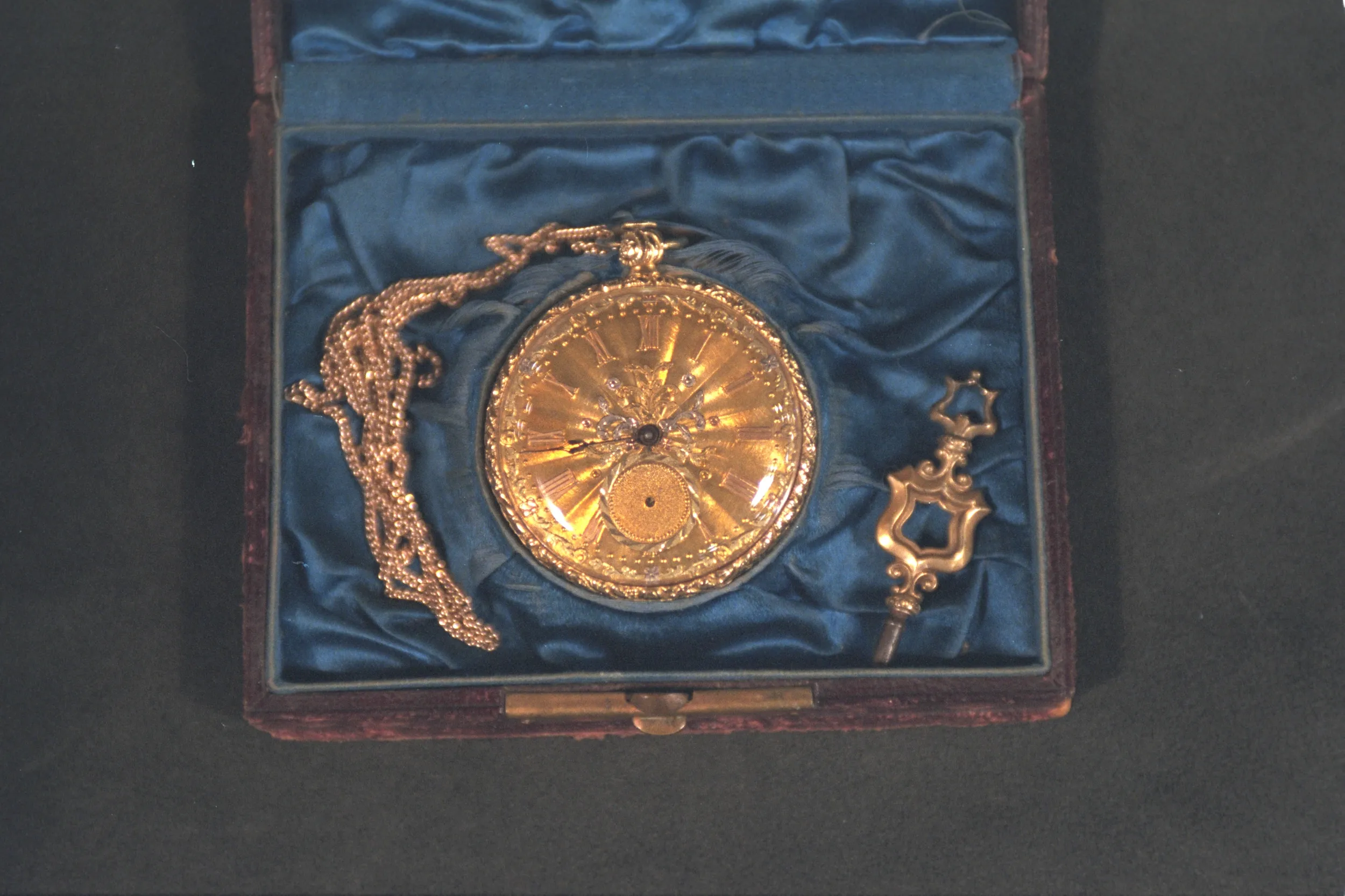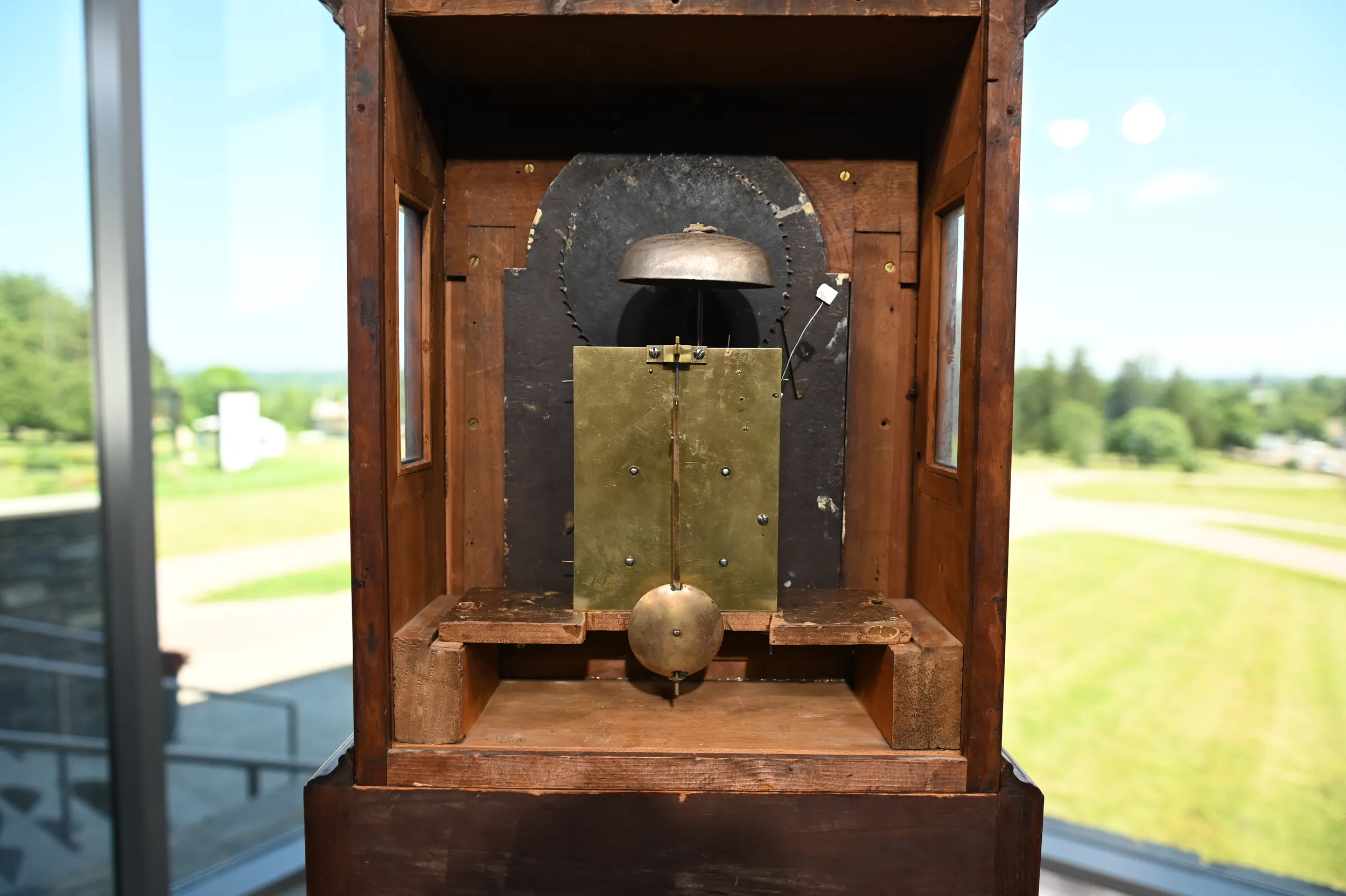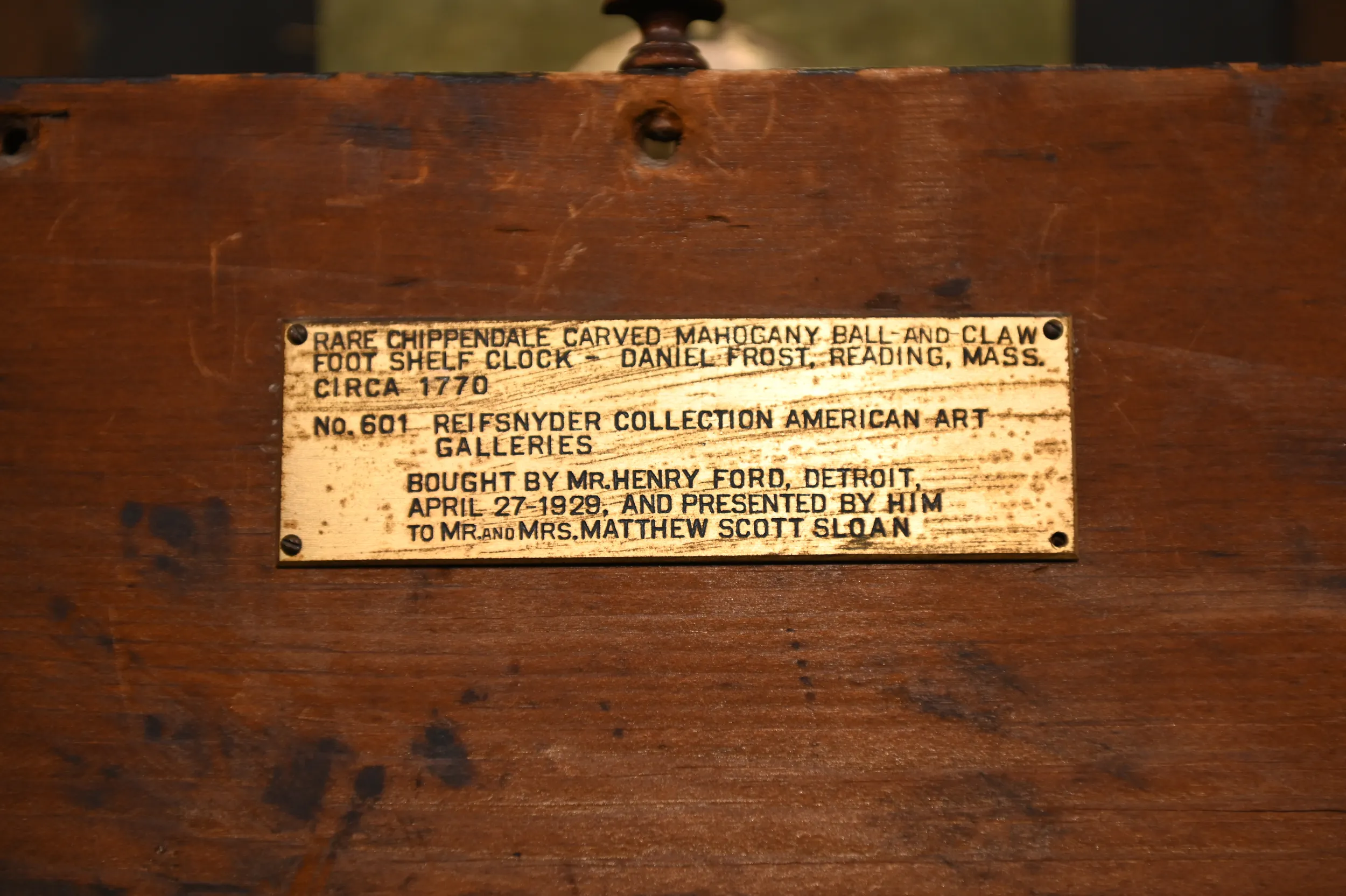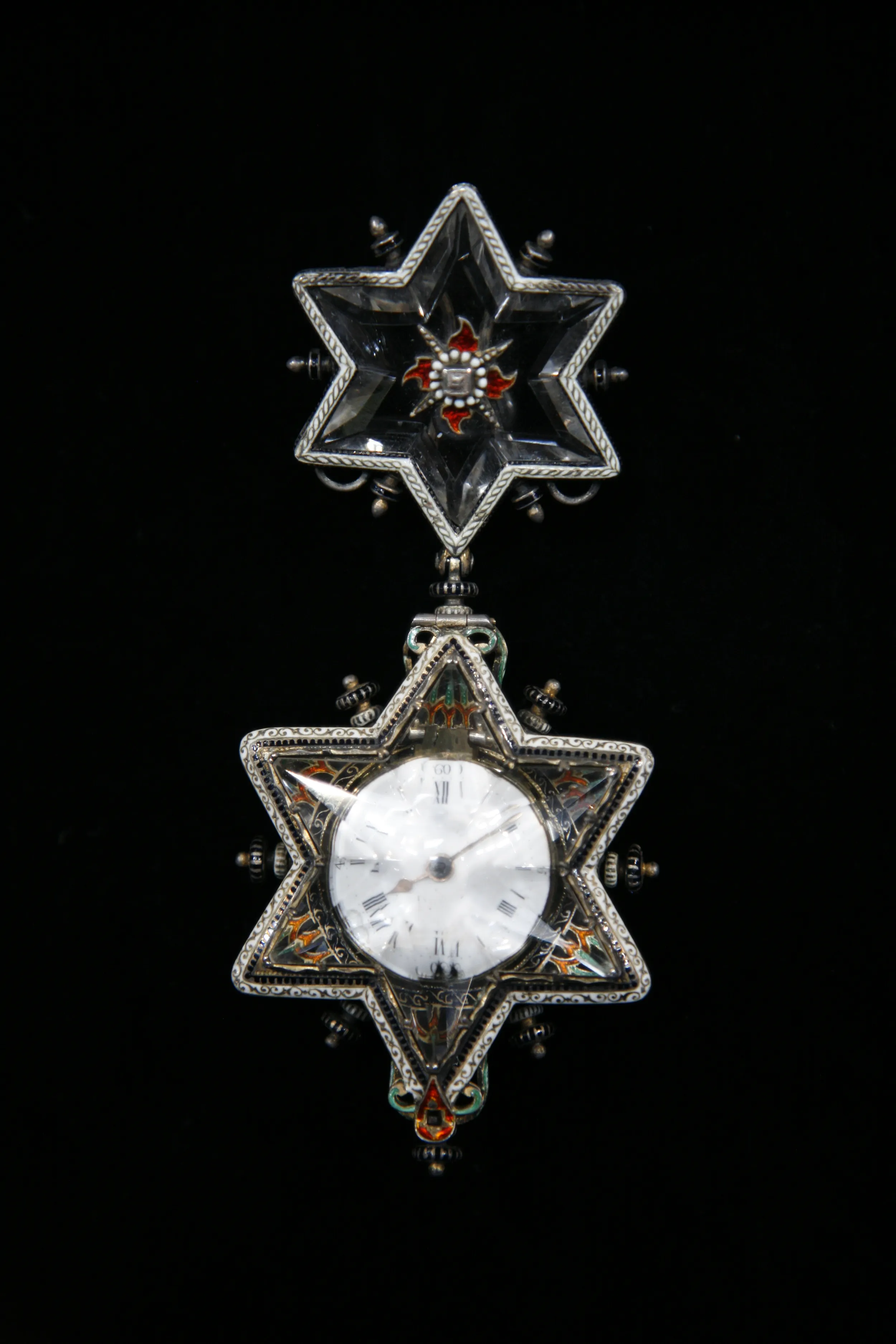GUEST: My mom gave it to me in the early '90s, and it was from her father, Matthew Scott Sloan. It was from the Reifsteiner Auction in the '20s. He was at the auction and he bid on it, and he got up-bidded. His friend Henry Ford was apparently in the back of the audience. Several weeks after the auction, a courier brought a box, and it was a presentation from Henry Ford, his good friend, to Matthew Scott Sloan. For her to give it to me was, was an honor and a, and a, and a pleasure and a big, big, a, big, big, big grin. Because this is... This is my honey.
APPRAISER: I've known about this clock for over 45 years. I just didn't know who owned it.
GUEST: Wow.
APPRAISER: I've been tracking it, and the first mention of it that I find, it was on display in the Pennsylvania Museum of Art, which is now the Philadelphia Museum of Art, in 1924. Five years later, it was sold in New York City in an auction of the Howard Reifsnyder collection.
GUEST: Yeah.
APPRAISER: Reifsnyder was one of the important very early collectors of Americana. In 1950, this clock was illustrated in Timepieces Quarterly, and then in 1973, it was illustrated and discussed again in the Bulletin of the National Association of Watch and Clock Collectors. (chuckles) And those discussions primarily revolved around who this maker might be, Daniel Frost from Reading... Was it Massachusetts? Was it, uh, Pennsylvania? Looking at this object, it's almost too good to be true-- I mean, is it, uh...
GUEST: (whispers): Yeah!
APPRAISER: (chuckles): Is this truly a great 18th-century object, or is it something that was cobbled together in the late 19th or early 20th century by a craftsman? Some areas of it are a difficult read, but I came to the conclusion that this is a period and original, uh, clock, and it dates to circa 1795 to 1800. Originally, it would have had a return that looked something like that, which makes it more finished and looks much better. It has been sort of aggressively restored at some point, but the basic unit is correct and it's original to the period. And if we turn the, the clock around, we have the plaque that commemorates what you mentioned, that this was given to your grandfather by Henry Ford. On the plaque it mentions that the wood is mahogany. It's actually walnut, and the secondary wood is pine. If we turn it further, we can see that it has the, the proper age. If we look at the dial, the dial does not have the cracks in the paint that you would expect. This paint is perfectly smooth. The moon disc, however, we can actually see the cracking in the paint. So this is original. This paint has been redone. It also explains why it says "Daniel Frost." This dial was obviously deteriorated at some point. It probably had some paint loss around the name, and this was conjecture, it's the best that they could do to come up with what name should be there. It should really say "Daniel Rose, Reading, Pennsylvania." That's who made this clock. There's another example that's very similar, that's known, by Daniel Rose. And in fact, this dial is a copy, it's a repaint, of the dials that were made in Reading, Pennsylvania. And one of the earmarks of those dials is this, what they call the Reading Eagle. This dial was probably painted by Benjamin Witman, a dial painter from Reading, Pennsylvania. I think a collector would pay, in a retail situation, in the vicinity of $50,000 for this clock today.
GUEST: Wow. (laughs) Awesome! (laughs)
APPRAISER: "Wow" is right. If this clock were perfect, and the dial were not repainted, I would put an insurance value of $250,000 on the clock. That's how special it is.
GUEST: Multiple wows.
APPRAISER: You can... (chuckles) For insurance purposes, you'd probably appraise it for $75,000. If you needed to replace it, you couldn't.

